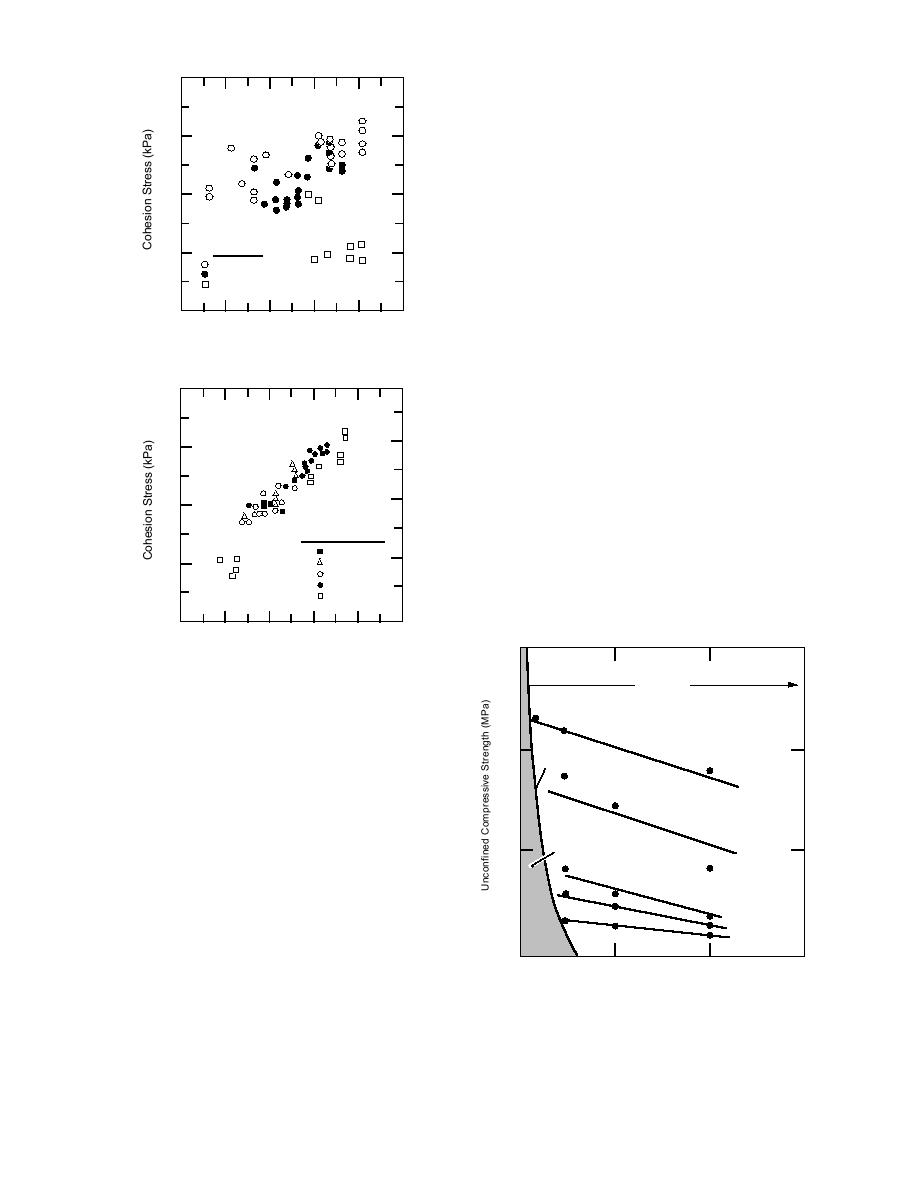
40
Microstructural studies
When the parameters of linear constitutive re-
a.
lationships or the strength of snow are plotted
30
against density, typically the scatter is large (App.
B). This situation prompted a question to M.
Mellor, following his presentation at the 1974
Grindelwald International Symposium on Snow
20
Mechanics (Mellor 1975) as to whether the large
scatter might be reduced if the influence of the
snow "texture" could be accounted for. Mellor
Grain Size
10
agreed, and there are many reports in the litera-
Fine (<1mm)
Moderate (1-2 mm)
ture that indicate it is necessary to characterize
Coarse (>2 mm)
the microstructure along with determining the
density in order to derive indicators of the me-
0
340
380
420
460
500
3)
chanical properties of snow. Yosida et al. (1956)
Density (kg m
used plate penetration experiments to demonstrate
a. Cohesion stress vs. density.
the differences in deformation between snow
40
samples of the same density but different degrees
of bonding. Voitkovsky et al. (1975) showed that
b.
the cohesion of a particular suite of samples was
independent of the density, but linearly related to
30
the contact area between grains (Fig. 1). Similarly,
from his own experiments and a review of the
available data, Fukue (1979) argued that snow
20
density is not a reliable predictor of the uniaxial
Density (kg m3 )
compressive strength, and showed (Fig. 2) that
the unconfined compressive strength of manufac-
320-340
350-370
10
tured snow samples increased by a factor of 10 as
380-400
410-430
they sintered at constant density. Armstrong
440-460
(1980), in a study of the densification of an alpine
0
400
800
1200
1600
2000
S K (m 1)
0.15
b. Cohesion stress vs. specific grain contact
surface.
Brittle Zone
Figure 1. Cohesion stress vs. density and
specific grain contact surface Sk for snow
samples with grain sizes as indicated. Sk is
0.10
Critical
Deformation Rate
defined as the net area of intergrain contacts
6 Days
per unit volume. The cohesion shows little de-
pendence on the density but is approximately
linearly related to Sk. Figure modified from Voit-
kovsky et al. (1975).
Ductile
3
0.05
Zone
tion. Work by Brown et al. (1973), Brown and
Lang (1975) and Brown (1976, 1977) had the ob-
2 Hours
jective of deriving constitutive relationships and
failure criteria for snow from theories of nonlin-
1
ear viscoelastic materials. However, little addi-
30 min
0
tional work in this direction has been published
0.5
1.0
1.5
Deformation Rate (mm s 1)
since these papers appeared. Instead, the effort
appears to have shifted to finding constitutive
Figure 2. Unconfined compressive strength vs. defor-
relationships for snow from studies of its micro-
mation rate for 15-cm-long snow samples of various
structural properties and processes.
ages (from Fukue 1979).
4



 Previous Page
Previous Page
